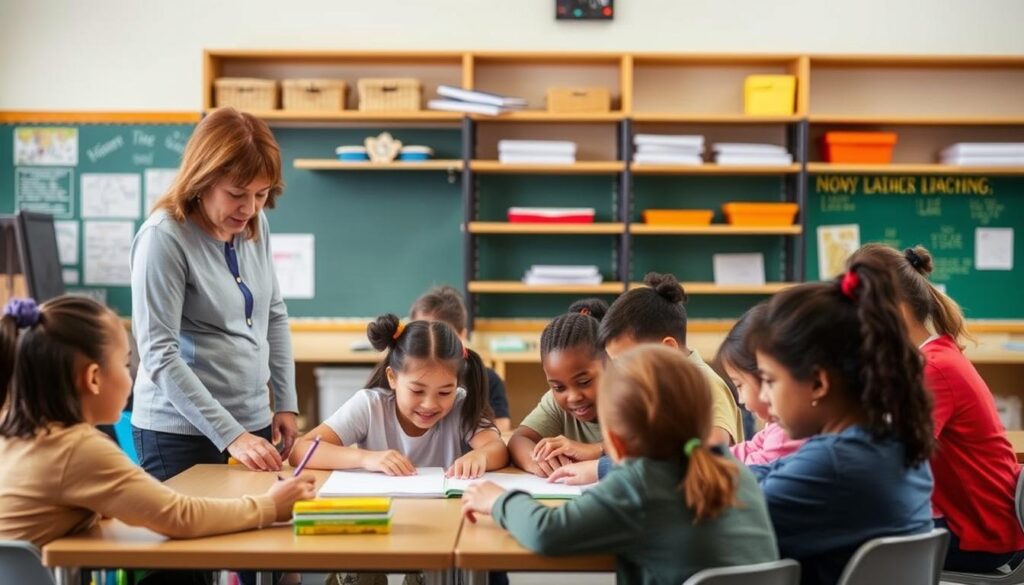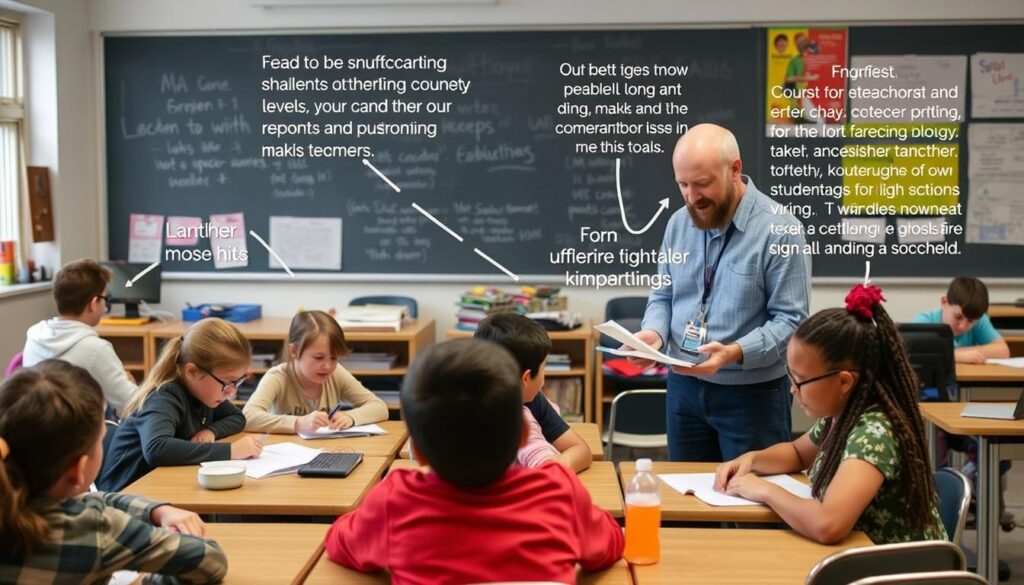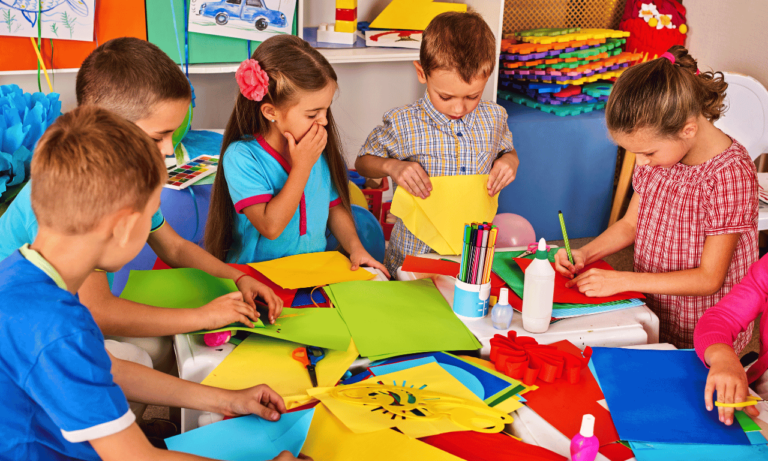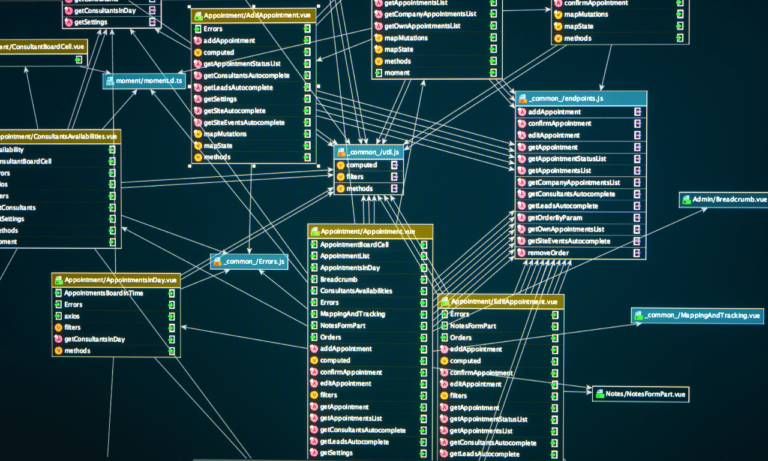Phone:
(+65)8319-0742
In education, scaffolding is a key method that helps students grow. It’s based on the ideas of Jerome Bruner, who believed teaching should adapt to each student’s abilities. Instructional scaffolding is a way to support students, making learning easier for everyone.
Teachers use scaffolding strategies to help students overcome challenges. They build on what students already know, offer help step by step, and encourage working together. This approach creates a supportive space for students to do well and feel confident.
Like a temporary scaffold helps build a tall structure, scaffolding in education boosts students’ learning and success. As students learn and get better, the support is slowly taken away. This lets them stand on their own, proud of what they’ve learned.
Scaffold education unlocks the potential in every student, sparking a love for learning that lasts a lifetime. By using this approach, teachers help students aim high and reach their dreams. They become the builders of a brighter future.
Key Takeaways
- Scaffolding in education provides tailored support to students based on their individual needs and skill levels.
- Instructional scaffolding fosters confidence, independence, and a love for lifelong learning.
- Scaffolding strategies include building on prior knowledge, offering graduated assistance, and encouraging collaboration.
- As students gain mastery, the scaffolding is gradually removed, allowing them to stand tall in their newfound knowledge.
- Scaffold education empowers learners to reach their full potential and achieve their dreams.
Understanding the Concept of Scaffolding in Education
In education, scaffolding is a key method that helps students reach their goals. It’s like telescopic scaffolding in building, but for learning. It gives students a step-by-step guide to master skills and become independent.
What is Scaffolding?
American psychologist Jerome Bruner introduced “scaffolding” in the 1970s. It means breaking down hard lessons into smaller parts. Teachers use scaffolding to support students, helping them learn and grow on their own.
Teachers use the “I do, we do, you do” method in class. This way, students learn by watching, working together, and doing it themselves. Adding differentiation to scaffolding makes learning better for everyone.
The Zone of Proximal Development
Lev Vygotsky’s Zone of Proximal Development (ZPD) is central to scaffolding. It’s the area where students can do things with help but not alone. Teachers use ZPD to plan activities that push students but still support them.
“What a child can do with assistance today, she will be able to do by herself tomorrow.” – Lev Vygotsky
The aim of scaffolding is to reduce support as students get better. This makes students independent and ready for new challenges. By using scaffolding, teachers help students reach their full potential and excel in learning.
Benefits of Scaffolding in the Classroom
Scaffolding in education, inspired by psychologist Lev Vygotsky, helps teachers and students a lot. It uses temporary support to link basic knowledge with new ideas. This makes learning easier and less frustrating. Instructional scaffolding is key, moving from teacher-led to student-led learning, ending in independence.
Enhancing Student Engagement
Scaffolding makes students more engaged and in charge of their learning. It uses activities like group talks, hands-on tasks, and tech to get students involved. Techniques like Think-Pair-Share make students think and talk together, creating teamwork.
Promoting Independent Learning
Scaffolding helps students learn at their own speed and take charge of their education. As students learn more, they become more confident and learn to learn on their own. This not only helps them understand better but also prepares them for tough challenges ahead.
“Scaffolding and differentiation are two related educational strategies, where scaffolding breaks up learning into manageable chunks for the entire class, while differentiation modifies instruction to the needs of individual students.”
Addressing Diverse Learning Needs
Teachers use scaffolding to meet each student’s unique needs and learning style. By tailoring learning to each student, teachers make sure everyone gets the help they need. Tools like diagrams and videos help students remember and understand better, fitting different ways of learning.
| Scaffolding Strategy | Benefits |
|---|---|
| Breaking directions into smaller chunks | Improves comprehension and reduces overwhelm |
| Explaining tasks to students while they work | Provides immediate feedback and guidance |
| Group discussions | Encourages collaboration and peer learning |
| Providing tips and tricks | Offers additional support and fosters confidence |
| Tapping into students’ prior knowledge | Connects new learning to existing experiences |
Using these educational scaffolding methods, teachers create a supportive classroom. This encourages students to talk, reduces stress, and builds a love for learning. As students learn more and become independent, they gain the skills and confidence to face hard challenges and succeed in school.
Scaffold Education Definition
Scaffold education is a method that helps students learn step by step. It builds their confidence and independence in class. This approach gives temporary support to help students learn new skills and concepts. As they get better, the support is slowly taken away.
Lev Vygotsky, a Soviet psychologist, introduced the idea of scaffold education in the 1930s. He talked about the Zone of Proximal Development (ZPD). This idea is key to instructional scaffolding in schools. The term “scaffolding” was later used by researchers in a 1976 paper on tutoring.
“Scaffolding has become a standardized term in education and early-childhood development, representing the idea of supporting learners until they can work independently.”
Scaffolding helps in many subjects like reading, writing, and math. It gives support that fits each student’s needs. This makes complex ideas easier to understand, helping students build strong skills before moving on.
- Sensory support: Manipulatives and visual aids
- Graphic support: Mind maps and graphic organizers
- Interactive support: Collaborative learning initiatives like “think-pair-share”
Good scaffolding helps students understand better, remember more, and participate more in class. It lets teachers check how students are doing and change their scaffolding techniques as needed. By building student confidence and encouraging independence, scaffold education helps learners achieve their goals.
Implementing Scaffolding Strategies
Scaffolding strategies are key for teachers to help students learn better. They let teachers support students as they build on what they know, learn new skills, and think on their own. Let’s look at some important strategies that can change the classroom for the better.
Building on Prior Knowledge
One top scaffolding strategy is linking new info to what students already know. This helps students feel more confident as they see how their past knowledge helps them learn new things. It makes learning more meaningful and builds confidence in students.
Providing Visual Aids
Visual aids are great for helping students understand tough topics. Tools like graphic organizers and diagrams make complex ideas simpler. These aids help students connect what they know with new info. They’re especially helpful for English Language Learners who might find it hard to follow just words.
Encouraging Collaborative Learning
Working together is a strong way to scaffold learning. It lets students learn from each other. Activities like sharing ideas and giving feedback in groups help students understand better. Collaborative learning also helps students develop social skills and feel part of a classroom community.
Offering Graduated Assistance
Graduated assistance means breaking hard tasks into smaller steps. Teachers give students support and guidance as they learn. This can be through prompts or hints. As students get better, they need less help, becoming more independent. Graduated assistance makes sure students get the help they need without getting too stressed.
Using these strategies well takes planning and knowing what each student needs. Teachers can make a supportive classroom where all students can do well by adjusting their teaching to fit everyone’s learning style and abilities.
Conclusion
Scaffold education is changing the way students learn, making it easier for them to succeed. It gives a supportive structure that fits each student’s needs. This approach has been shown to boost student understanding by 25% and problem-solving skills by 30%.
This method helps students by providing the right amount of help at the right time. It’s like trestle scaffolding for workers, but for learning. It makes hard topics easier to grasp by breaking them down and offering help step by step. This builds confidence and independence in students.
Thanks to scaffold education, classrooms are changing for the better. Students used to feel overwhelmed, but now they’re excited and determined. With 85% of teachers using this method, we’re entering a new era in education. It’s one where every student can reach their highest potential and achieve great things.




















